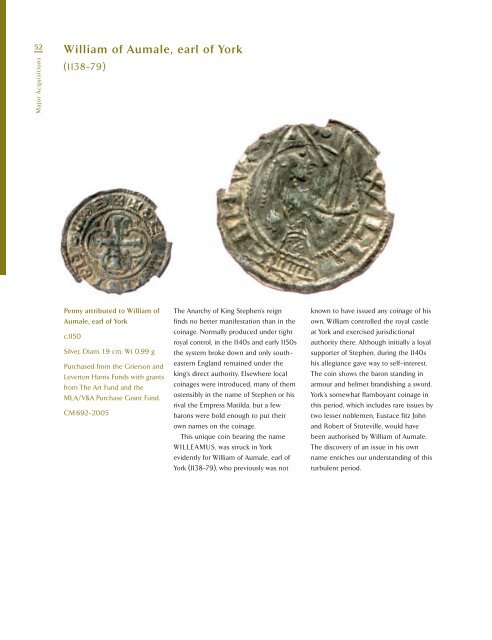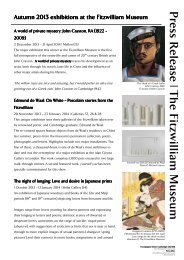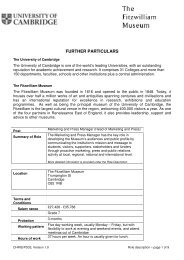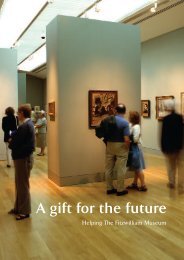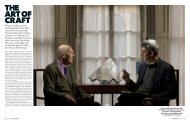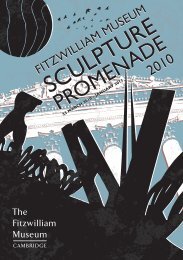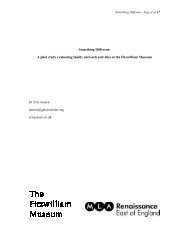The Fitzwilliam Museum - University of Cambridge
The Fitzwilliam Museum - University of Cambridge
The Fitzwilliam Museum - University of Cambridge
You also want an ePaper? Increase the reach of your titles
YUMPU automatically turns print PDFs into web optimized ePapers that Google loves.
52<br />
Major Acquisitions<br />
William <strong>of</strong> Aumale, earl <strong>of</strong> York<br />
(1138–79)<br />
Penny attributed to William <strong>of</strong><br />
Aumale, earl <strong>of</strong> York<br />
c.1150<br />
Silver, Diam. 1.9 cm, Wt 0.99 g<br />
Purchased from the Grierson and<br />
Leverton Harris Funds with grants<br />
from <strong>The</strong> Art Fund and the<br />
MLA/V&A Purchase Grant Fund.<br />
CM.692-2005<br />
<strong>The</strong> Anarchy <strong>of</strong> King Stephen’s reign<br />
finds no better manifestation than in the<br />
coinage. Normally produced under tight<br />
royal control, in the 1140s and early 1150s<br />
the system broke down and only southeastern<br />
England remained under the<br />
king’s direct authority. Elsewhere local<br />
coinages were introduced, many <strong>of</strong> them<br />
ostensibly in the name <strong>of</strong> Stephen or his<br />
rival the Empress Matilda, but a few<br />
barons were bold enough to put their<br />
own names on the coinage.<br />
This unique coin bearing the name<br />
WILLEAMUS, was struck in York<br />
evidently for William <strong>of</strong> Aumale, earl <strong>of</strong><br />
York (1138–79), who previously was not<br />
known to have issued any coinage <strong>of</strong> his<br />
own. William controlled the royal castle<br />
at York and exercised jurisdictional<br />
authority there. Although initially a loyal<br />
supporter <strong>of</strong> Stephen, during the 1140s<br />
his allegiance gave way to self-interest.<br />
<strong>The</strong> coin shows the baron standing in<br />
armour and helmet brandishing a sword.<br />
York’s somewhat flamboyant coinage in<br />
this period, which includes rare issues by<br />
two lesser noblemen, Eustace fitz John<br />
and Robert <strong>of</strong> Stuteville, would have<br />
been authorised by William <strong>of</strong> Aumale.<br />
<strong>The</strong> discovery <strong>of</strong> an issue in his own<br />
name enriches our understanding <strong>of</strong> this<br />
turbulent period.


